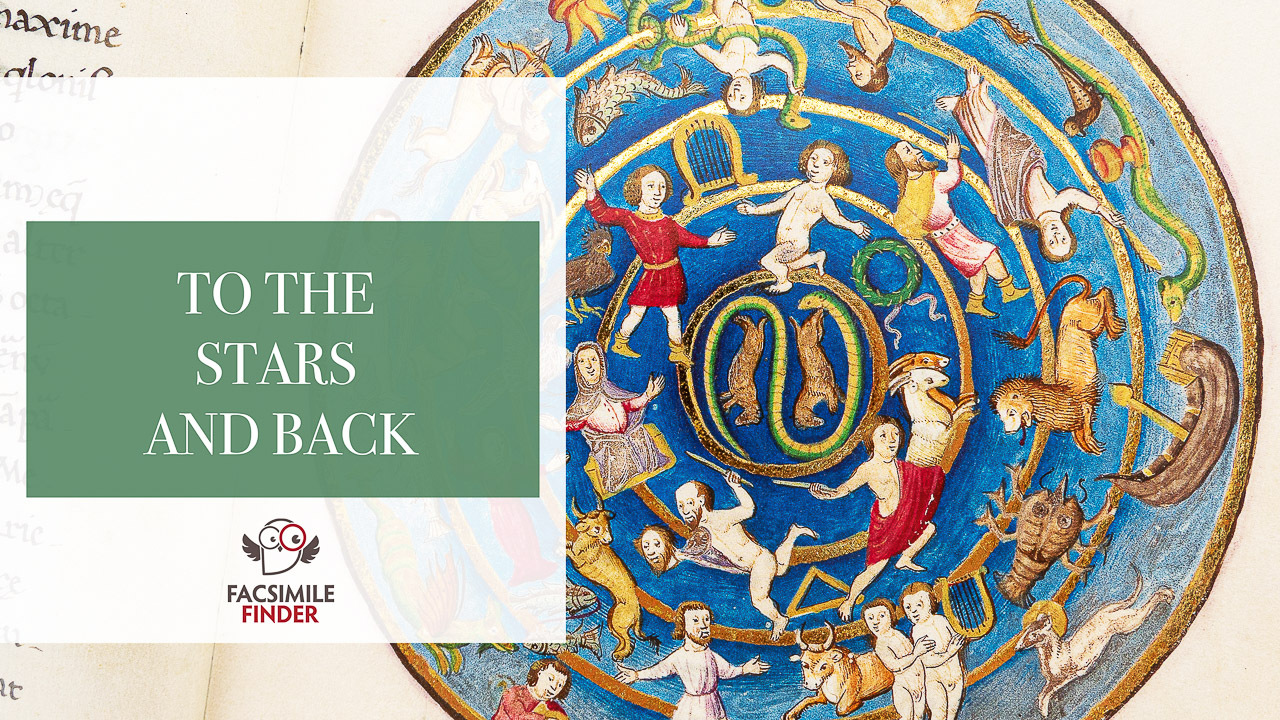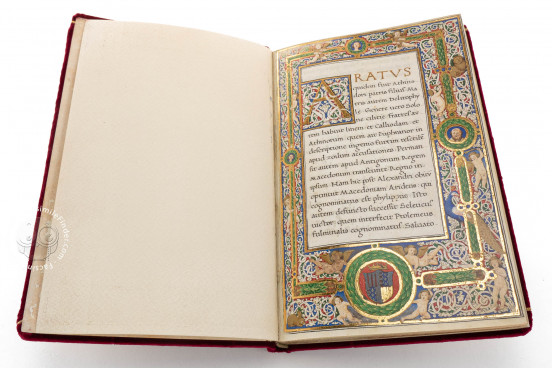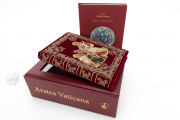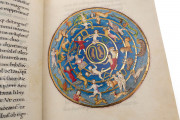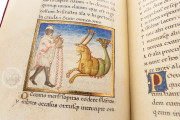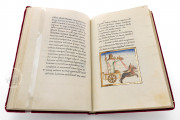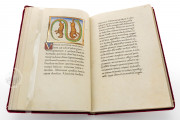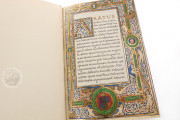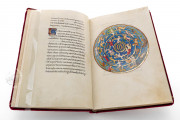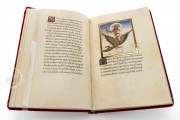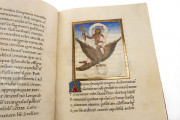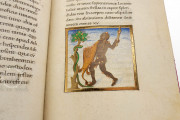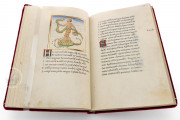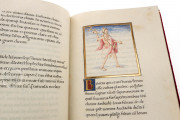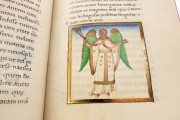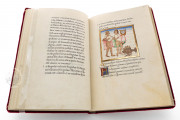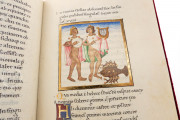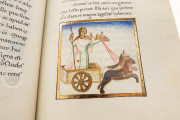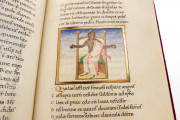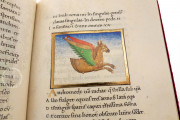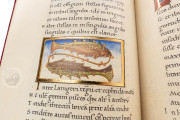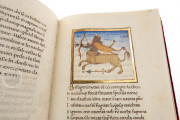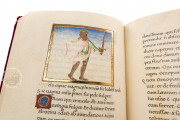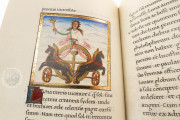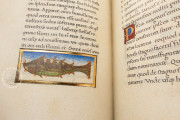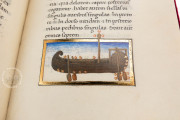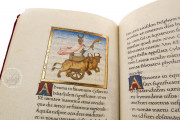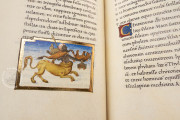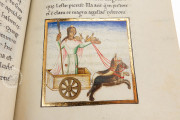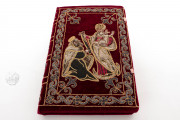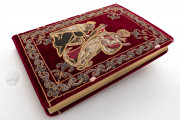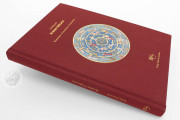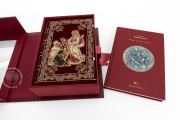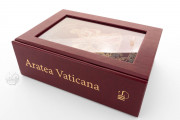The Vatican Aratea is a spectacular specimen of Italian Humanistic book art. Created in Naples in the second half of the fifteenth century, it boasts a compilation of texts on the constellations of ancient authority and beautifully painted decoration stemming from the hand of Matteo Felice, an illuminator employed regularly by the royal court at Naples. Its forty miniatures depict the constellations and celestial bodies in the guise of the gods of Greek and Roman antiquity and include a full-page planisphere (fol. 3r).
At the root of the manuscript's text is the Phaenomena by the Greek poet Aratus of Soli (third century BCE), which describes the make-up and relative positions of the constellations. The text of the Vatican manuscript includes excerpts from an ancient Latin verse translation of Aratus's poem attributed to Germanicus Caesar (d. 19 CE) with interpolated prose explanations, plus extracts from Pliny the Elder's Natural History (first century CE) and the Astronomy of Hyginus (of uncertain date).
Refined Illumination of an Astronomical Text
The manuscript's illumination includes a splendid incipit page (fol. 1r) with a classic Humanistic white vine-stem border occupied by putti (naked infants, some winged) playing musical instruments or otherwise frolicking among the vines, together with a peacock, a hare, and a lion. The coat of arms of Ferdinand I (1423-1494), King of Naples, occupies the lower border.
The constellations are presented in framed miniatures that precede the portion of the text that describes them. The characters that inspired the names of the constellations are painted to appear as three-dimensional figures in a cloudy sky, with the approximate positions of the stars indicated by gold or red balls overlayed with golden rays. Matteo or his patron was clearly more interested in bringing the characters of ancient myth to life than mapping the stars.
A Planisphere Embracing the Celestial World
A circular representation of the sky occupies a full page near the beginning of the book. At the center, the two bears Ursa Maior and Ursa Minor are shown entwined in Draco, the serpent. These constellations are shown in the same configuration in the first of the constellation miniatures that illustrate the annotated poem of Germanicus (fol. 9v). More constellations fill the concentric circles of the celestial map. An unusual feature is that the head of Medusa held by Perseus is that of a bearded man.
Refined Presentation
The Vatican Aratea is one of at least four manuscripts produced at the Neapolitan court based on a manuscript—probably Carolingian—purportedly discovered by the Humanist scholar Poggio Bracciolini in Sicily before 1429. Written in a fine Humanistic Minuscule, the Vatican manuscript has been carefully proofread, with both corrections and variant readings recorded in the generous margins of the book's pages. Blank spaces were left for occasional Greek words, which were never written. The passages of Germanicus's poem are immediately apparent, with the first letter of each verse offset into the left margin.
Made for Royalty
The manuscript was surely made for someone at the court of Ferdinand I (known as Ferrante), King of Naples, and probably for his son Giovanni (1456-1485). Whether commissioned by the father or son is not clear, but royal patronage is attested by the coat of arms in the lower border of the manuscript's incipit page.
Barberini Embroidered Binding
The manuscript found its way into the collection of Cardinal Maffeo Barberini (1568-1644), who became Pope Urban VIII and whose library became the foundation of the Barberini collection. The elaborate embroidered binding on red velvet that depicts the Virgin and Child before Saint Thomas on the front cover and the Barberini coat of arms surmounted by the cardinal's hat on the back certainly dates from the time Maffeo owned the codex. The Barberini collection was purchased for the Biblioteca Apostolica Vaticana in 1902.
We have 1 facsimile edition of the manuscript "Vatican Aratea": Die Aratea Vaticana facsimile edition, published by Mueller & Schindler, 2022
Request Info / Price
